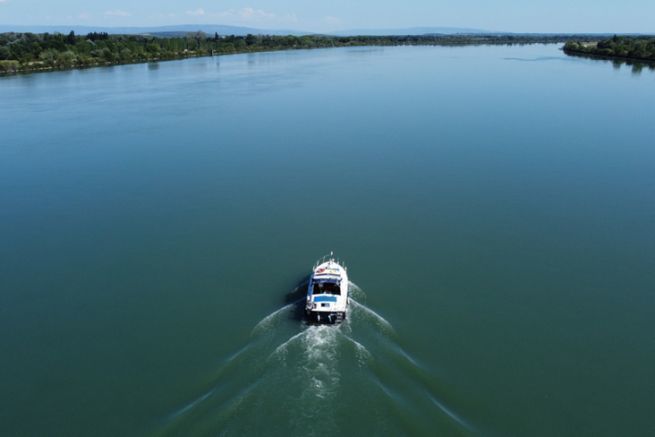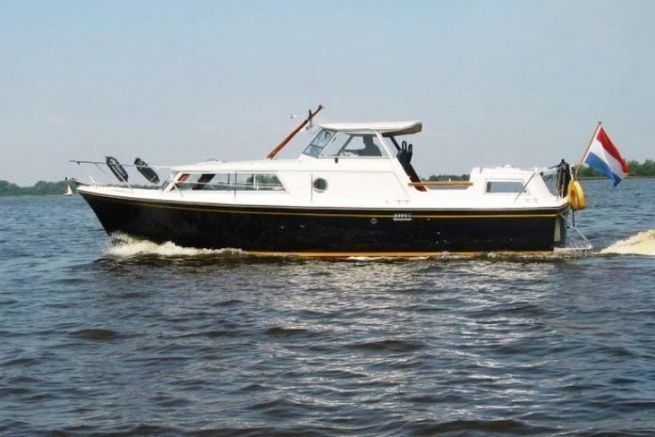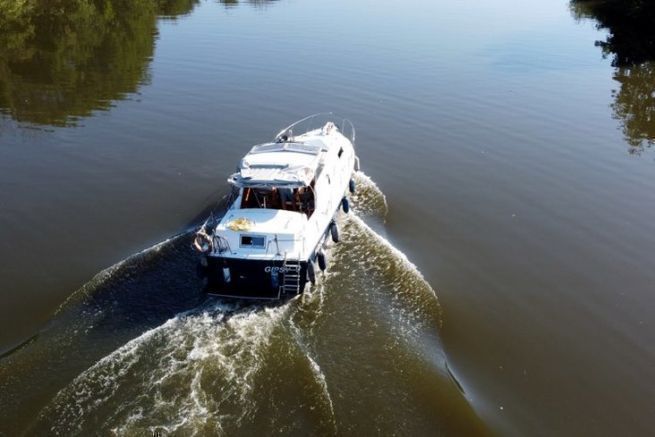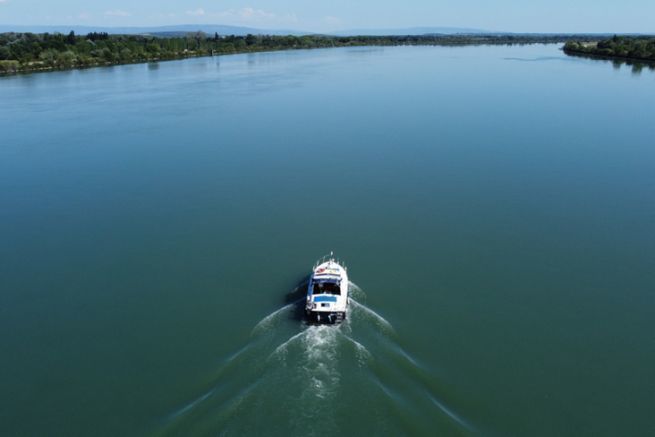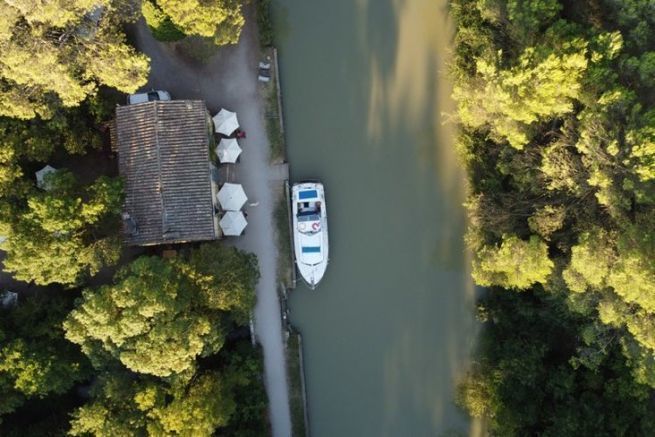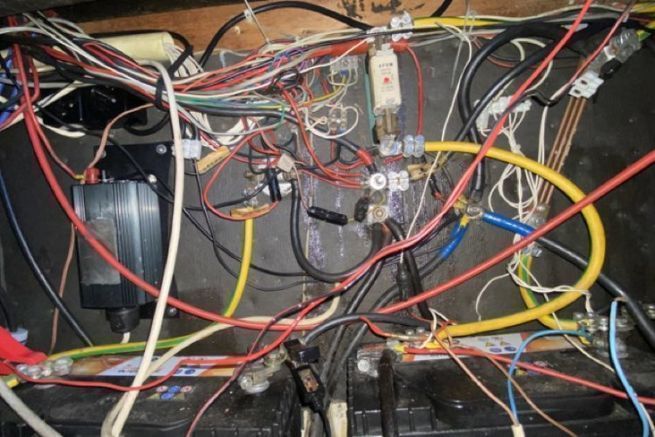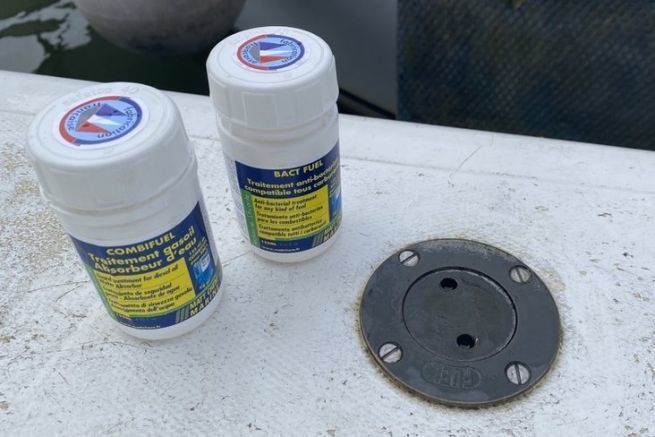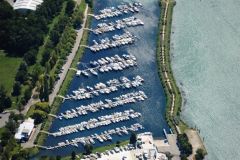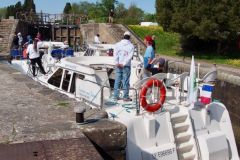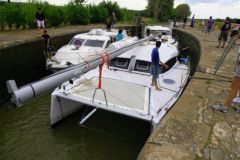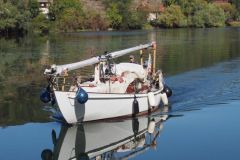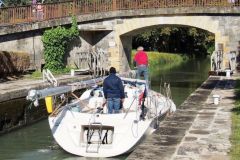More than 900 km to cover
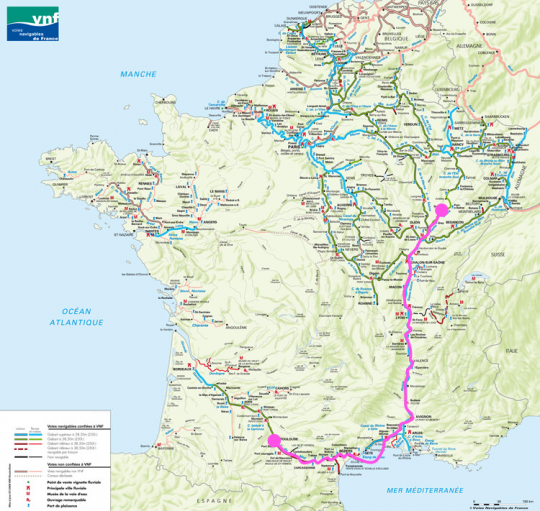
A quick look at the map of Voies Navigables de France (VNF which manages the river network in France) shows a beautiful route that goes down the Saône, joins the Rhône in Lyon before heading for the Mediterranean to finally enter the Canal du Midi and finish in Toulouse. A beautiful trip of more than 900 km and more than 80 locks..
Sailing on the Rhône
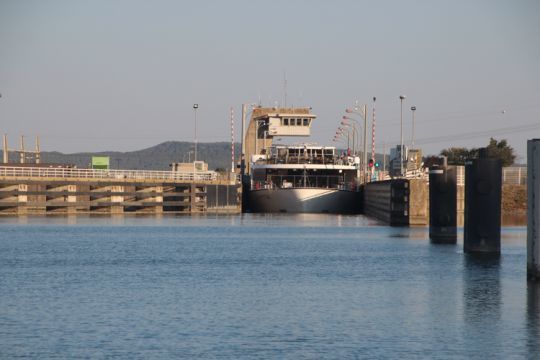
If the captain has some experience in river navigation, taking a big river like the Rhône was a first for us. Finally, the navigation went well. Indeed, with 2 x 73 hp, we had enough power to always remain maneuverable. This is important, because on the Rhône, the current is between 3 and 5 km/h. So you have to be able to go upstream or even to keep speed when it forms a few eddies. This is often the case at the exit of locks and at the foot of dams.
On the Rhône, navigation is quite simple. It is important to respect the markings. Many red and green poles are regularly installed. This marking is identical to that of the harbour entrances at sea. The red ones are left on the port side when going up the river.
Make way for the big ones
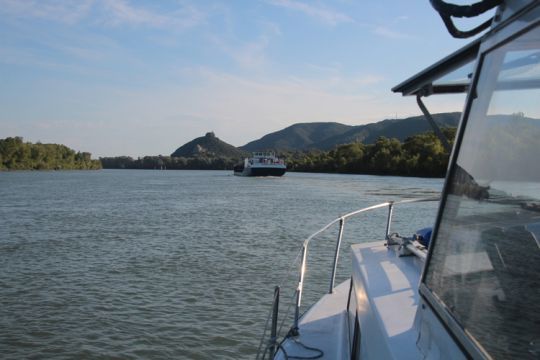
The particularity of this great river is the traffic. Here, one crosses large boats. These have priority. A bit like at sea when you meet a cargo ship, you have to move aside and let it pass. As a result, the navigation is always done by looking behind. Indeed, these convoys often go faster than you and catch up with you. Fortunately, we are not as slow as they are and we can go along the channel leaving the middle available for them.
Impressive locks but easy to pass
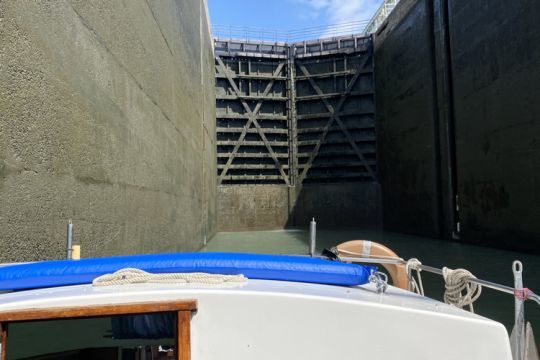
One could worry about the locks of the Rhone. Indeed (even if there are only 14 of them), they are impressive by their dimensions. They can accommodate convoys of nearly 200 m (the locks are 190 meters long and 12 meters wide). But above all they offer a difference in level that makes you dizzy. The biggest one, in Bollène, will make us go down 22,50 m... In fact, the manoeuvre is simple. You have to announce yourself to the lock keeper by VHF and moor in the lock when the light is green. The mooring is done on floating bollards, that is to say that they will go down with you without you having to follow the adjustment of the mooring lines. Once moored, all you have to do is wait for the opposite doors to open before leaving. As far as regulations are concerned, it is compulsory to wear a vest for anyone who is on the bridge in the lock.
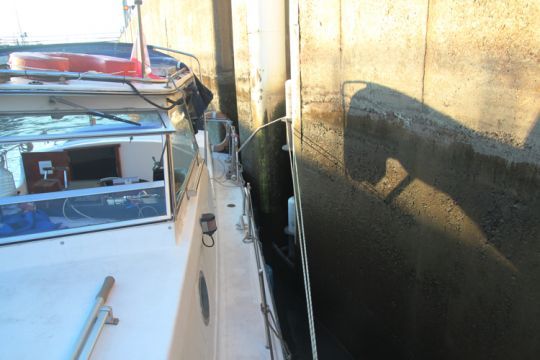
Anchorages as at sea
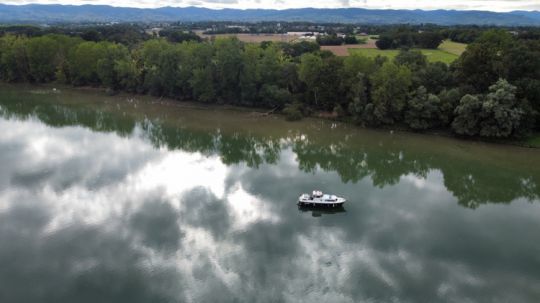
The good surprise of this navigation was to discover that we could anchor on a river. Several times, for the evening stopover, we chose to go up a dead arm of the river to anchor quietly near a bank. Here, no traffic, no waves, only the silence of nature and the singing of birds. We anchored in a few meters of water and the boat was placed facing the current without pulling too much on the anchorage.
Otherwise, some ports and some stops are accessible with more or less services available. Depending on the offer (electricity, water, sanitary facilities...), the price of our nights in the port varied between 6 euros and 20 euros (for our boat of less than 10 m). Each time, we were well received, with always a welcome from the occupants of the neighboring boats who came to take our moorings. This is a fact to be mentioned because this conviviality will totally disappear on the Canal du Midi.
A good autonomy in diesel
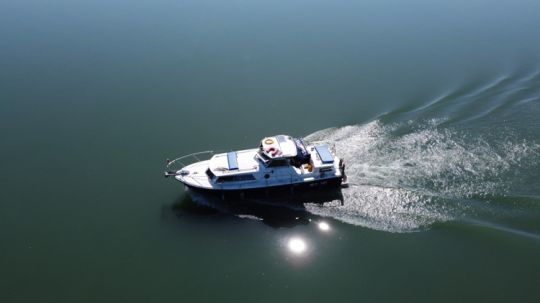
The other good surprise is the consumption of the boat. Of course, we are helped by the current that pulls us towards the sea. But sailing on a single engine at 1200 rpm, we sail at 12 km/h on the bottom. This is not much since the limit allows me to go much faster (30 km/h), but at this rate, we consume very little (less than 4 l/h). If the navigation on one engine is not a problem in straight line, for manoeuvres (locks, harbours...), we have to start the second one to control.
Participation in the mechanics is mandatory

This descent of the Rhone will be marked by a succession of opening of the engine hold to correct the small defects of "obsolescence". The boat on which we are sailing is almost 50 years old and has not sailed for 4 years. This can be felt, with the fuel supply hoses which are slightly porous, with a starter which unscrews with the vibrations and some other small things. As a result, the mechanic's blue coat is often out and we have to admit that the Perkins 4.236's diesel reboot has no more secrets for us. We were expecting to have to intervene (probably not as much) so it was not a surprise.
This descent of the Saône and the Rhône will have finally taken us 10 days at the end of which we finally point our bow at sea.
The continuation in the next episode..
